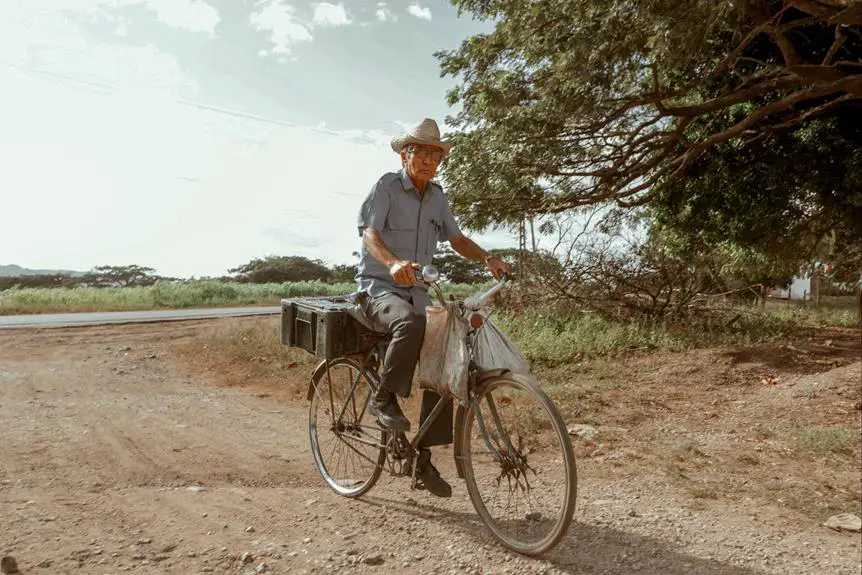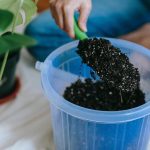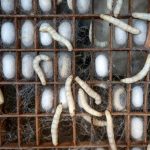You're ready to take your container gardening to the next level, and choosing the right fabric for your grow bags is key. Different fabrics offer unique benefits for your plants, and understanding which fabrics thrive in grow bags is essential for your gardening success.
From breathable and durable options like geotextile fabric to innovative air pruning materials, the right fabric can promote healthy root development and optimal plant growth. By mastering the art of selecting the best fabric for your grow bags, you'll create an environment where your plants can truly thrive.
Let's explore the top fabric choices and how they can elevate your gardening game.
Key Takeaways
- Fabric grow bags provide superior aeration and drainage, promoting healthier root systems.
- Different types of fabrics, such as polypropylene, felt, and recycled PET, offer various benefits depending on the plant's needs.
- Polypropylene fabric is ideal for air pruning, preventing root circling and promoting new root growth.
- When choosing a fabric, factors like durability, cost-effectiveness, environmental impact, and specific plant needs should be considered.
Benefits of Using Fabric Grow Bags
When you use fabric grow bags, your plants thrive due to the superior aeration and drainage they provide. The fabric construction of these grow bags allows for excellent root aeration, promoting healthier and more robust root systems. This aeration is crucial for preventing root circling and promoting overall plant health. Additionally, the fabric material also enhances water retention, ensuring that your plants receive adequate moisture without the risk of waterlogging. The breathable nature of the fabric helps in regulating the temperature, preventing overheating in hot weather and providing insulation in cooler conditions. This temperature regulation is vital for maintaining optimal growing conditions for your plants.
Moreover, the portability of fabric grow bags is a major advantage. You can easily move them around your garden or patio, ensuring that your plants receive the right amount of sunlight and shade as needed. This flexibility is especially beneficial for plants that require varying light conditions throughout their growth cycle.
Types of Fabrics for Grow Bags
To thrive in grow bags, you should consider using fabrics that offer durability and breathability. When selecting the fabric for your grow bags, you'll want to compare different materials to determine the best option for your specific needs. Here are some key points to consider:
- Fabric Material Comparison
- Polypropylene: This material is known for its strength and resistance to UV rays, making it a durable choice for grow bags.
- Felt: Felt fabric provides excellent breathability and drainage, creating a healthy environment for plant roots.
- Recycled PET: This eco-friendly option offers both durability and breathability, while also contributing to sustainability efforts.
- Ideal Plant Compatibility
- Root Vegetables: For plants like carrots and potatoes that require deep root systems, a sturdy fabric like polypropylene may be the best choice.
- Herbs and Flowers: Felt grow bags are well-suited for herbs and flowers as they provide the necessary drainage and aeration.
- Fruit-Bearing Plants: Recycled PET fabric can be a great option for fruit-bearing plants, providing the right balance of durability and breathability for healthy growth.
Choosing the right fabric for your grow bags can significantly impact the health and growth of your plants.
Best Fabric for Air Pruning
You should regularly consider using polypropylene fabric for air pruning in your grow bags.
When it comes to air pruning benefits, polypropylene fabric stands out for its effectiveness. This type of fabric promotes air pruning, a process where plant roots are naturally pruned when they come into contact with air. As roots reach the fabric, they're exposed to air, causing the tips to dehydrate and die off, stimulating the growth of new roots from the existing ones.
Polypropylene fabric is particularly effective in this process due to its sturdy yet breathable nature. The fabric allows air to penetrate the root zone, facilitating the air pruning process and preventing roots from circling within the grow bag.
In addition to promoting air pruning, polypropylene fabric offers excellent durability and resistance to UV radiation, ensuring that it can withstand outdoor conditions. Its ability to maintain its structure and integrity over time makes it a reliable choice for air pruning in grow bags.
When considering the best fabric for air pruning, polypropylene stands out as a top choice for its effectiveness in promoting healthy root development and overall plant growth.
Comparing Durability of Fabric Options
Comparing the durability of fabric options is essential when selecting the most suitable material for grow bags. When considering the longevity of fabric choices, it's crucial to compare cost, environmental impact, and long-term performance.
Here's a breakdown of the key factors to consider:
- Comparing Cost
- Evaluate the initial investment versus the long-term durability to determine the most cost-effective option.
- Consider the potential savings from not having to frequently replace grow bags due to fabric deterioration.
- Environmental Impact
- Assess the eco-friendliness of the fabric options, considering factors such as biodegradability and sustainability.
- Look for fabrics that align with environmentally conscious practices to minimize the overall impact on the environment.
- Long-Term Performance
- Examine the expected lifespan of different fabric choices to ensure they can withstand continuous use in various growing conditions.
- Consider factors such as resistance to UV radiation, tearing, and fraying to gauge long-term performance.
Additionally, when comparing fabric options, it's essential to consider their breathability and water retention capabilities. These factors play a significant role in creating optimal growing conditions for plants while ensuring the durability of the grow bags.
Choosing the Right Fabric for Your Plants
When selecting the right fabric for your plants, factor in their specific needs and the growing environment. Different fabrics offer various benefits that cater to the requirements of your plants. Consider factors such as moisture retention, root aeration, temperature control, and soil compaction when making your choice. Here's a comparison of some common fabric options:
| Fabric Type | Moisture Retention | Root Aeration | Temperature Control |
|---|---|---|---|
| Polypropylene | High | Good | Moderate |
| Felt | High | Excellent | Excellent |
| Breathable Fabric | Moderate | Good | Moderate |
Choosing the right fabric is crucial for the overall health and growth of your plants. For instance, if you're growing plants that require high moisture levels, a fabric with excellent moisture retention like felt would be ideal. On the other hand, if you need superior root aeration, a breathable fabric or felt would be a suitable choice. Understanding the specific needs of your plants and the advantages each fabric offers will help you make an informed decision, ensuring optimal growth and productivity.
Frequently Asked Questions
Can Fabric Grow Bags Be Used for Indoor Gardening?
Fabric grow bags are perfect for indoor gardening. They offer excellent aeration and drainage, promoting healthy root growth. They're compatible with a variety of plants and offer the advantage of being lightweight and easy to move.
Are There Any Fabrics That Are Not Suitable for Certain Types of Plants?
When considering fabric breathability, it's crucial to match it with your plant's needs. Some plants prefer high breathability, while others require less. Additionally, fabric durability is essential for healthy root development in grow bags.
How Do Different Fabrics Affect the Moisture Retention of the Soil?
Different fabric types impact soil moisture retention differently. Some fabrics like burlap allow for better aeration and drainage, while plastic fabrics can trap moisture. Consider environmental impact when choosing fabric grow bags.
Can Fabric Grow Bags Be Reused for Multiple Growing Seasons?
You can definitely reuse fabric grow bags for multiple growing seasons. The reusability of these bags provides long-term benefits, making them a cost-effective choice. Their durability and breathability contribute to the plants' health and growth.
Are There Any Environmental Benefits to Using Fabric Grow Bags Compared to Traditional Containers?
Using fabric grow bags offers reduced waste and supports sustainable gardening practices. They are eco-friendly, breathable, and promote healthier root systems. You'll enjoy the environmental benefits while growing your plants with confidence and ease.
- Tetron Fabric for Marine Applications: Durability and Use Cases - June 18, 2025
- Tetron Fabric for Outdoor Furniture: Weather Resistance and Care - June 18, 2025
- Tetron Fabric for Wall Coverings: Style and Application Tips - June 18, 2025







